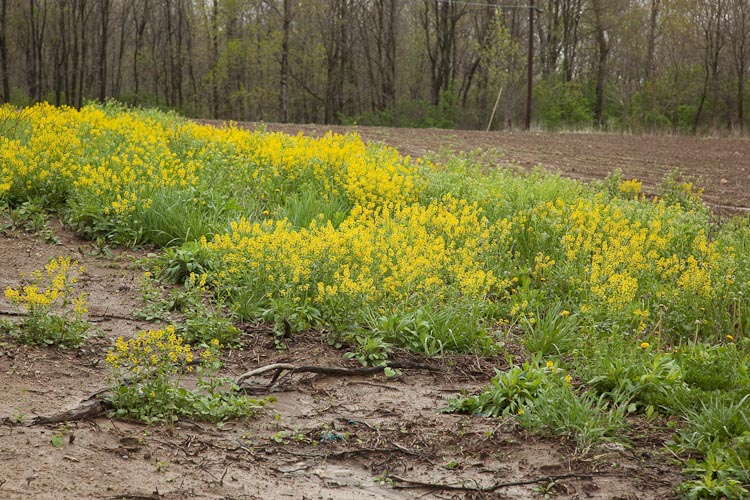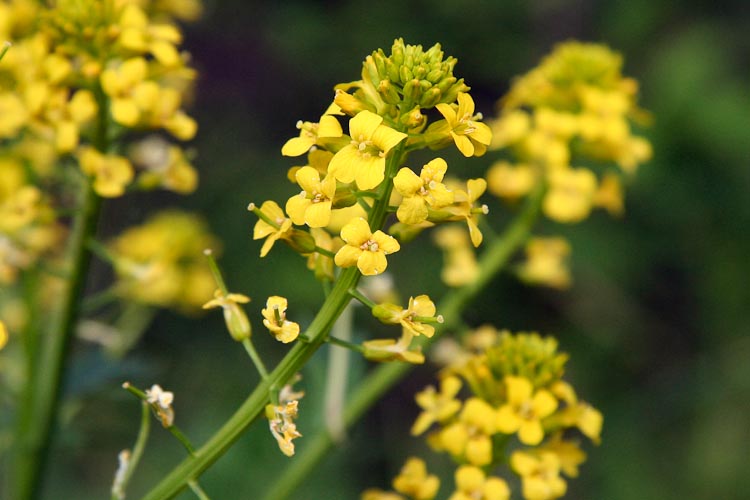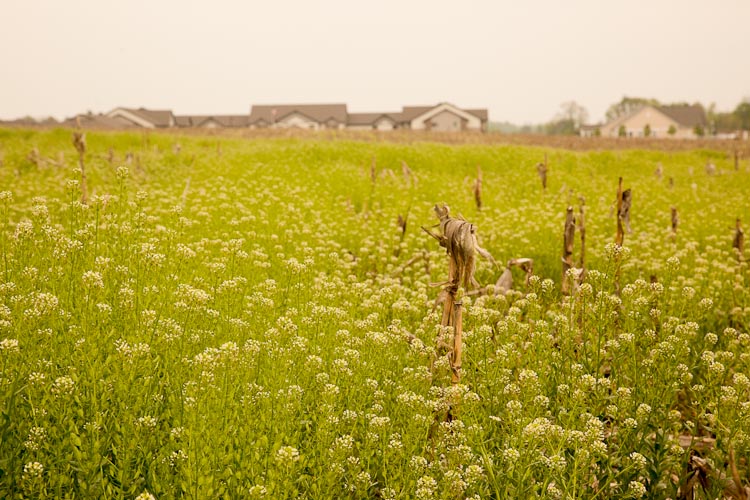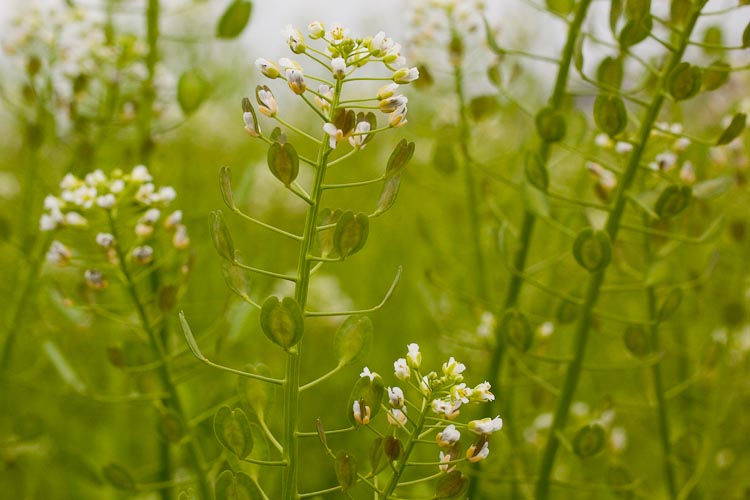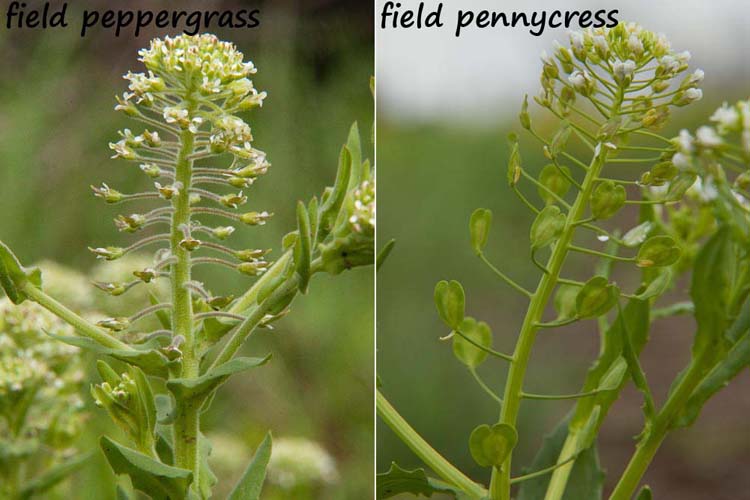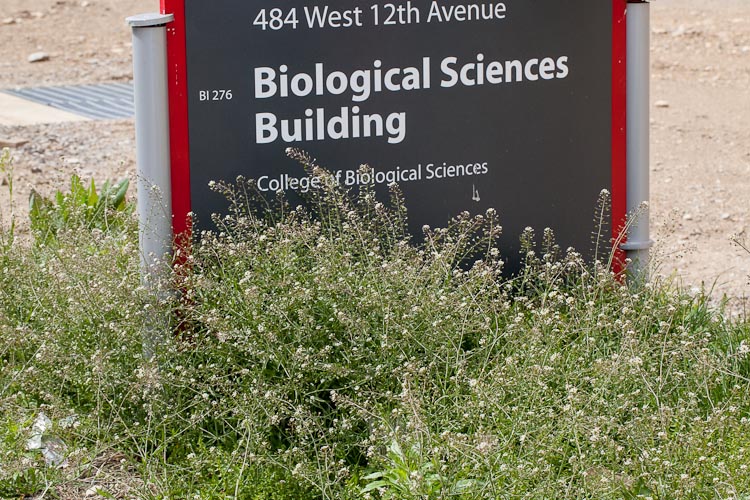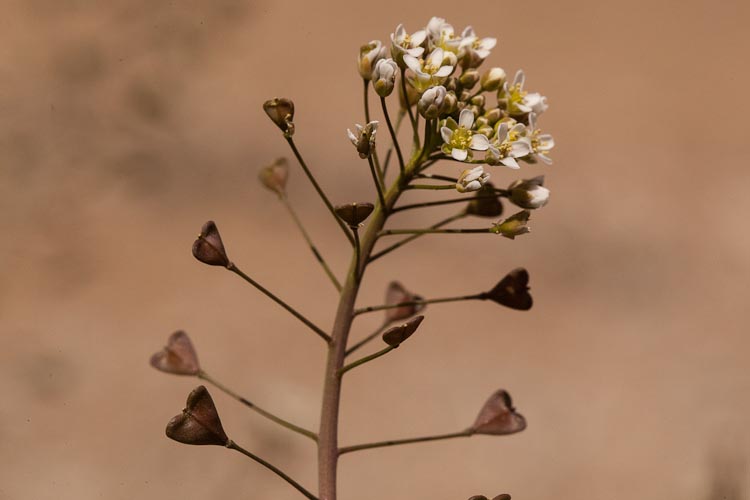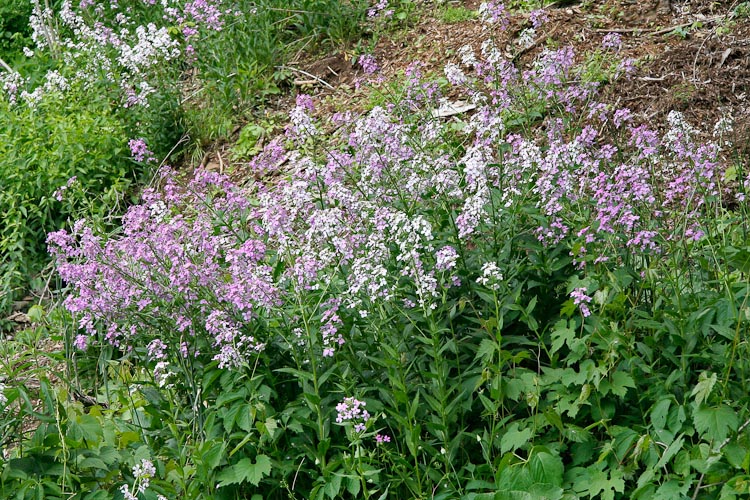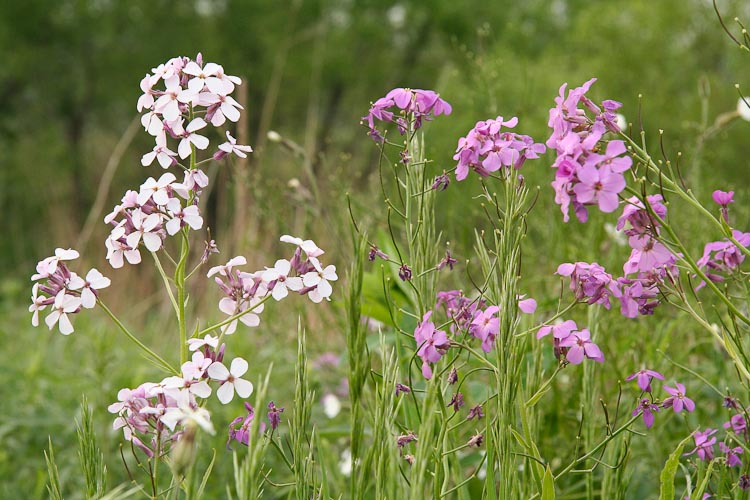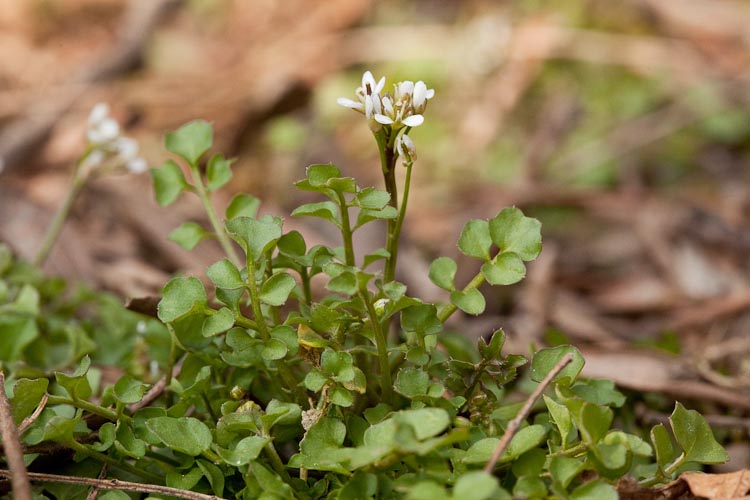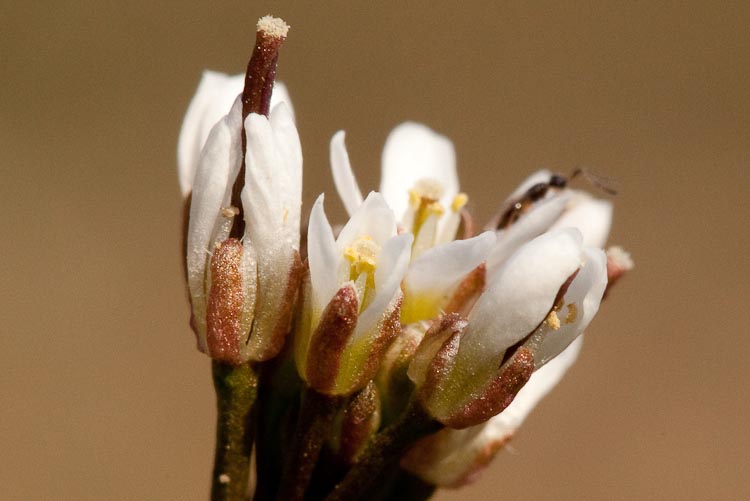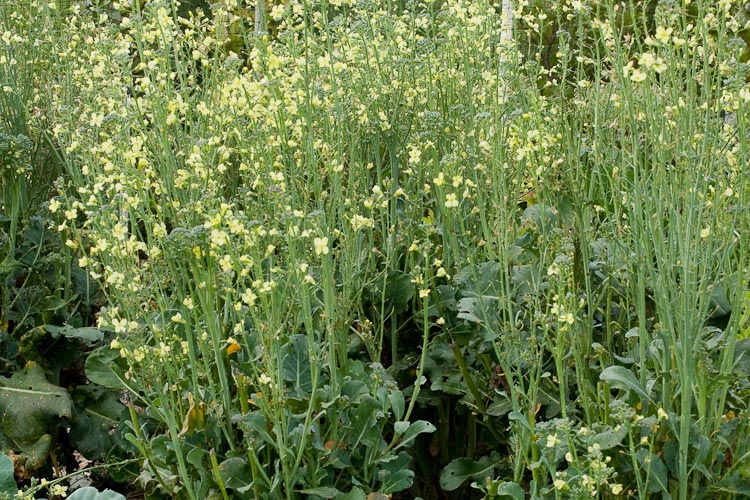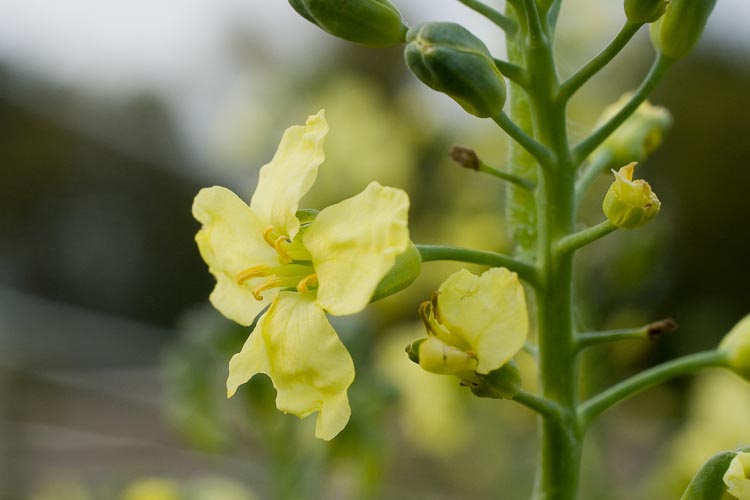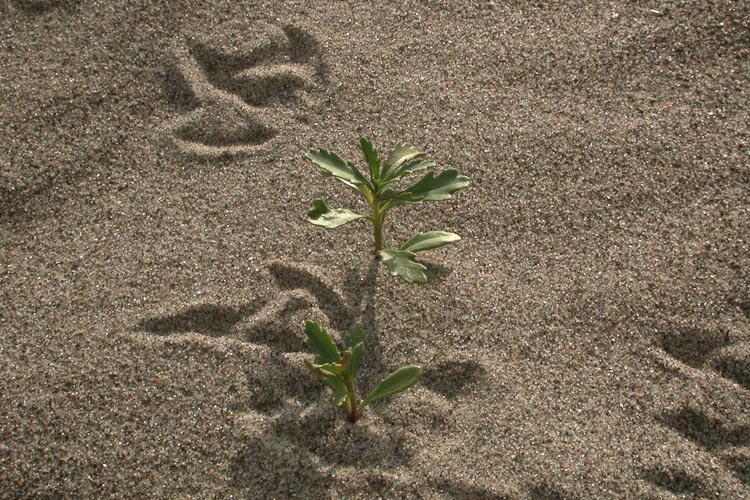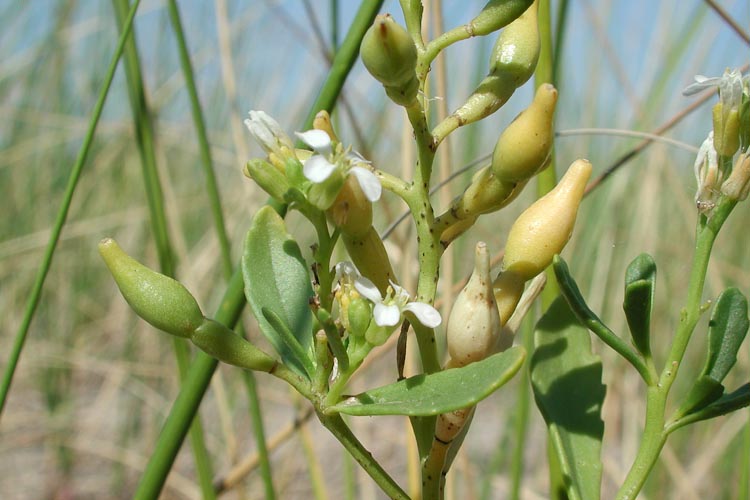BRASSICACEAE
(mustard family)
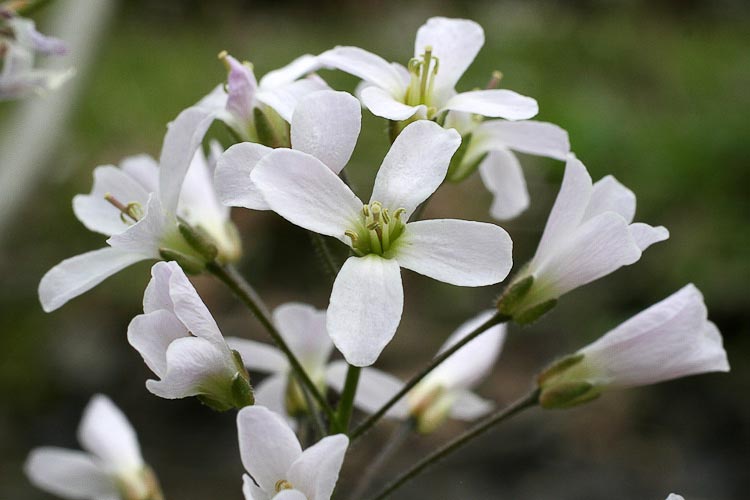
Cut-leaved toothwort (Cardamine concatenata) is a native spring wildflower.
The mustard family (Brassicaceae) consists mainly of annual to perennial herbs with watery acrid juices (having a radish-like peppery taste). They bear alternate leaves which lack stipules. The stems are often hairy, with forked or star-shaped (stellate) hairs. The calyx consists of 4 separate sepals, and the corolla of 4 petals that are often separable into a narrow “claw” at the base, expanded into a broader “limb” at the upper petal end. The androecium is composed of 6 stamens in a unique “tetradidynamous” arrangement in which there are 4 long stamens and 2 short ones. The gynoecium is syncarpous (of 2 united carpels) containing ovules that are borne along the ovary wall. (This is called “parietal placentation.”) The ovary is divided internally, but because the partition goes across the carpels instead of between them, it’s regarded as a “false” partition (called a “replum”) and the fruit is such a strikingly modified capsule that it has a special name, the “silique” (if it’s long and narrow), or a “silicle” if short and squat.
The original name of the family, which it is still sometimes called, is the “Cruciferae,” meaning “cross-bearing.” Mustards can be recognized, in part, by the cross-shaped arrangement of their 4 petals. Here’s a closeup of of a mustard flower that is familiar to biology students. It’s a so-called “Wisconsin Fast Plant,” a variety of oilseed rape plant bred to grow especially fast and with a minimum of care that is used in the elementary through college classrooms to demonstrate plant development and Mendelian inheritance.
 The Wisconsin Fast Plant is a classroom study plant.
The Wisconsin Fast Plant is a classroom study plant.
Members of the Brassicaceae are found worldwide, but are most prevalent in the north temperate regions, as well as parts of the Mediterranean basin and central and southern Asia. In central Ohio, mustards predominate during the cool springtime months, primarily as as roadside and agricultural weeds. One example is of a weedy roadside mustard is common winter-cress Barbarea vulgaris.
SLIDE THE IMAGE FOR A CLOSEUP OF WINTER-CRESS
Common winter cress is common along roadsides and farm fields in spring.
Here’s another massive display of a weedy crucifer. This one is field pennycress, Thlaspi arvense, a good example of the coin-like short flat “silicle” fruit type that is the basis of its name, “pennycress.”
SLIDE THE IMAGE FOR A CLOSEUP OF PENNYCRESS
Field pennycress is an annual weed that is especially abundant in fallow fields.
Pennycress (genus Thlaspi) is a good example of the short and flat silicle type mustard fruit. Another example is the also quite weedy peppergrass (named for its hot flavor, but it is not a grass), in the genus Lepidium.
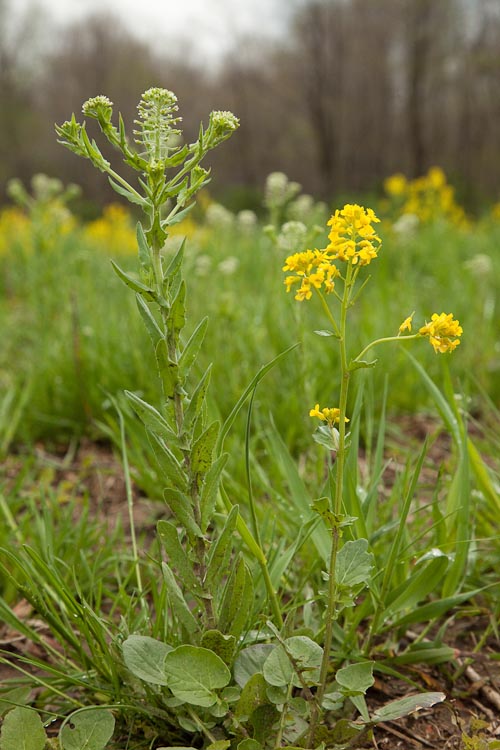 Field peppergrass with his buddy, common winter-cress.
Field peppergrass with his buddy, common winter-cress.
To tell these two weedy flat-fruited mustards apart, look carefully at their fruits: smaller and proportionally thicker on peppergrass.
One of the world’s most widely distributed weeds, shepherd’s purse, Capsella bursa-pastoris, has both a common name and specific epithet that refer to the resemblance of its fruits to wee little pocketbooks owned by some herder of sheep. Shepherds purse leaves can be eaten raw or cooked and the especially young ones (before the plant flowers) is a tasty addition to salads.
The seeds of shepherd’s purse and some other members of this family produce a sticky mucilage when wet. Biologists at the University of California at Riverside discovered that mosquito larvae became stuck to clusters of such seeds in an experimental setting, and died. It has been suggested mustard family members seeds might be useful in mosquito abatement.
SLIDE the IMAGE to see the WEE LITTLE POCKETBOOKS
Shepherd’s purse is a cosmopolitan annual with intriguing little fruits.
One of our most often misidentified plants is a late-spring blooming weed called “dames violet” (locally known as “dame’s rocket”) that looks superficially from afar like a patch of phlox. The cruciform petal arrangement (Phlox has 5 petals) gives it away.
SLIDE THE IMAGE TO SEE THE FLOWERS
It’s not phlox!
Plants are often categorized according to their “life span” as either perennial biennial, or annual. Many weeds are annuals. Typical annuals spout, then grow to maturity, bear flowers, and set seed all during the spring and summer growing season, thus over-wintering as a seed. An interesting variation on the annual habit, though, is to be a “winter-annual.” These little cuteys over-winter as a low circular patch of leaves (a rosette) that is all set to send up a flower stalk in early spring, then flower and fruit right away, to over summer as a seed. Whitlow-grass, Erophila (or Draba) verna, is a miniscule winter-annual that grows in gravelly open areas.
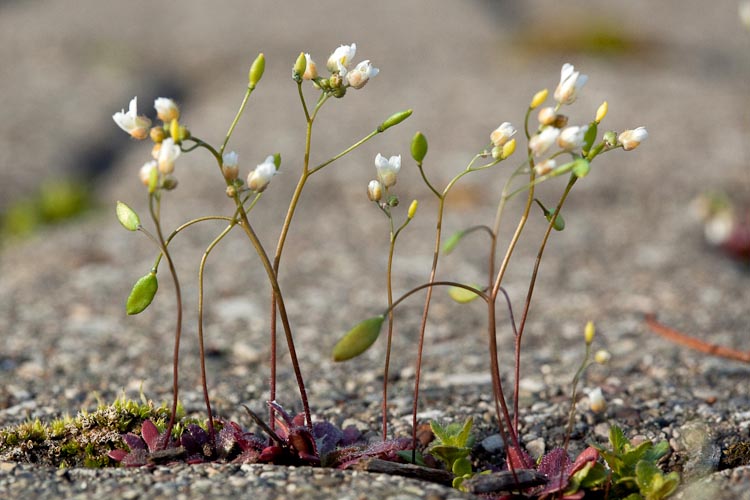
This does not remind me of those tall tubular plastic dancing things in front of Verizon stores.
Hairy winter-cress is another winter-annual. It’s found in farm fields, lawns, and open woods.
SLIDE THE IMAGE FOR A CLOSEUP OF THE FLOWERS
Hairy bittercress is a winter annual weed of open areas.
Speaking of weeds, among the most evil of them all is garlic mustard, Alliaria petiolata. This introduced European/Asian biennial thrives in North American woods, out-competing lovely spring wildflowers. Grr.
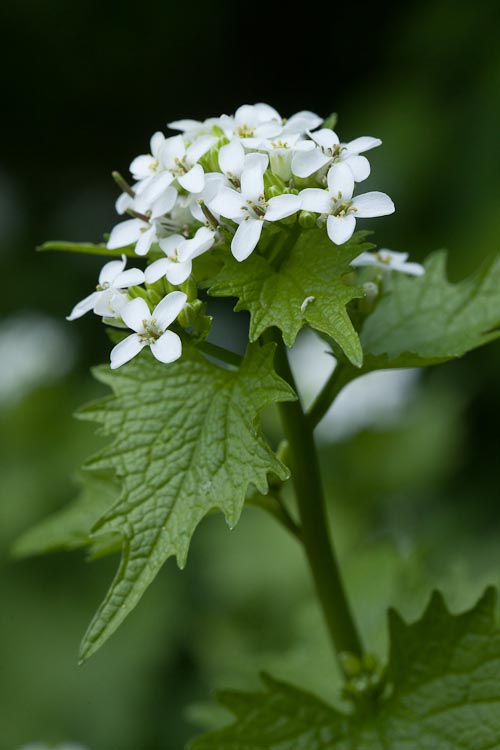
Bad plant, bad! Go play in traffic. Eat Roundup!
The mustard family is a fairly important agricultural one, in a positive sense too. Yes, mustard is a mustard, consisting of the ground seeds of (typically) Brassica nigra mixed with vinegar and spices. A familiar biting flavor is a hallmark of the family, exemplified by radish (Raphanus sativus), horseradish (Armoracia rusticana) and water-cress (Nasturtium officinale). It’s fun sometimes to let garden veggie plants flower and see what they’re like.
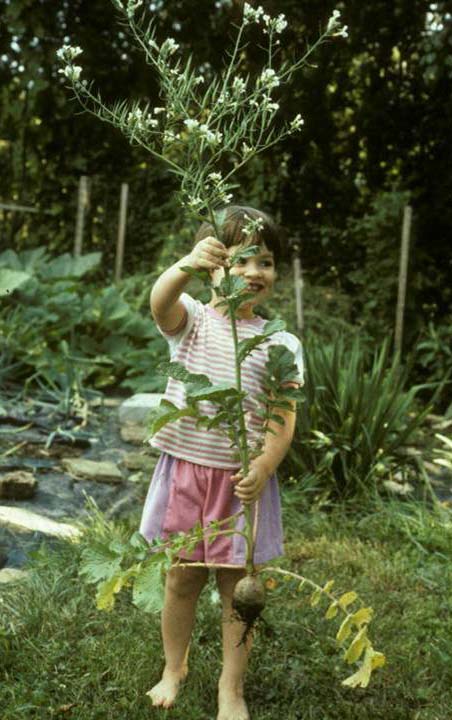
Cute kid holding a radish plant.
The most famous edible members of this family are the constellation of quite healthful vegetables sometimes known collectively as the “brassicas’ that are terrific examples of the type of human-assisted evolution called “artificial selection.” Cabbage, cauliflower, broccoli, kohlrabi, and Brussel’s sprouts are all the same species: Brassica campestris. It’s fun sometimes to let garden veggie plants flower and see what they’re like.
SLIDE the IMAGE to see BROCCOLI FLOWER
Some botanists are really bad gardeners.
Please don’t get the impression that all mustards are either weeds or food (or both at once). There are some quite lovely wildflowers in the Brassicaceae. One of them is purple cress, Cardamine douglassii, a woodland spring wildflower, seen here during an April shower, looking rather annoyed by it all.
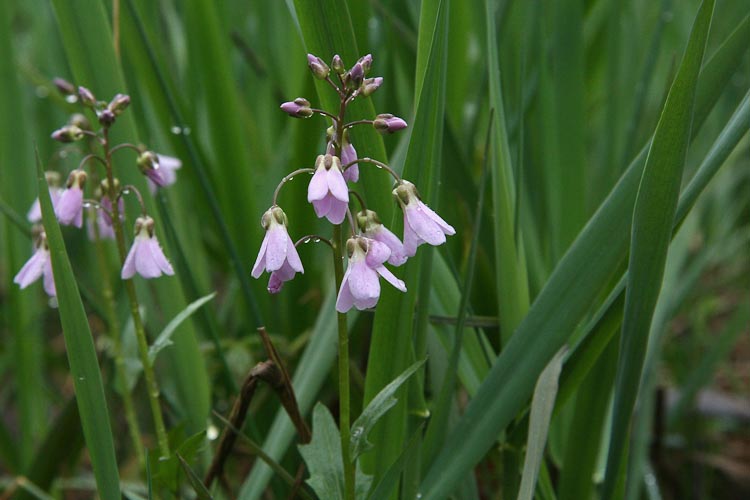 April showers pester April flowers.
April showers pester April flowers.
Toothwort, Cardamine concatenata is a common spring wildflower found in woodlands, often alongside spring cress.
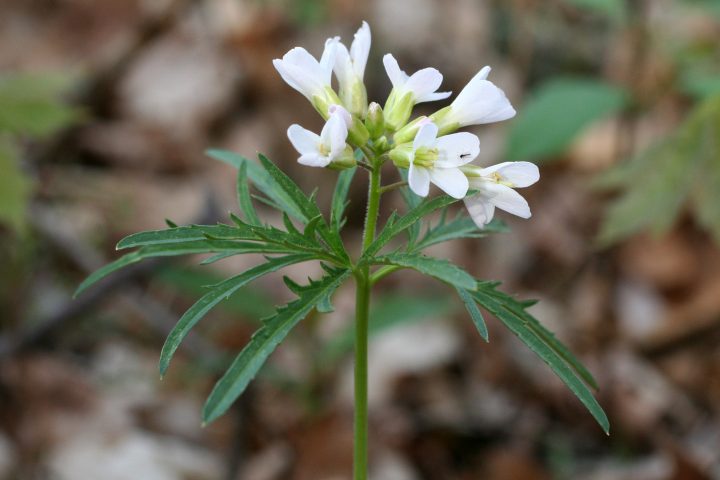
Toothwort is a spring wildflower of deciduous woods.
One of our most peculiar native plants is simultaneously adapted to water, and extreme dryness. This is sea-rocket, Cakile edentula. Growing in the driest sand, it has succulent water-storing stems and foliage. Meanwhile the fruits, dispersed by water, have corky flotation devices.
SLIDE THE IMAGE TO SEE SEA ROCKET FLOWERS AND FRUITS
Sea rocket is a succulent plant able to grow in bare sand.
The Brassicaceae has had considerable importance to human affairs. The European plant Dyer’s woad (Isatis tinctoria) is a noxious weed over much of the U.S., is the source of a blue dye that was used for body markings by the ancient Anglo-Saxons.A number of food plants are found in the mustard family, including radish, turnip, water-cress, horseradish and several varieties of Brassica oleracea: cabbage, broccoli and Brussels’s sprouts. Brassica campestris is the source of canola (rapeseed) oil.
MUSTARDS TO KNOW AND LOVE
(or not love as the case may be)

Cut-leaved toothwort, Cardamine concatenata, is a woodland spring wildflower.

Purple cress, Cardamine douglasii, is a spring wildflower.
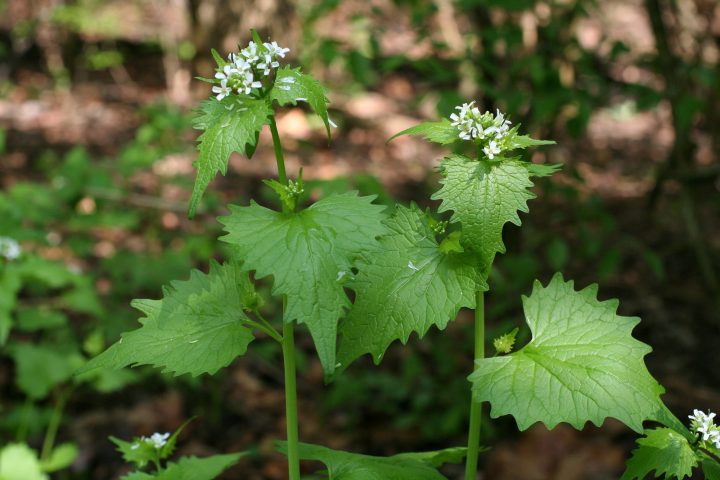
Garlic mustard, Alliaria petiolata, is an especially destructive alien weed that overtakes the forest understory.

